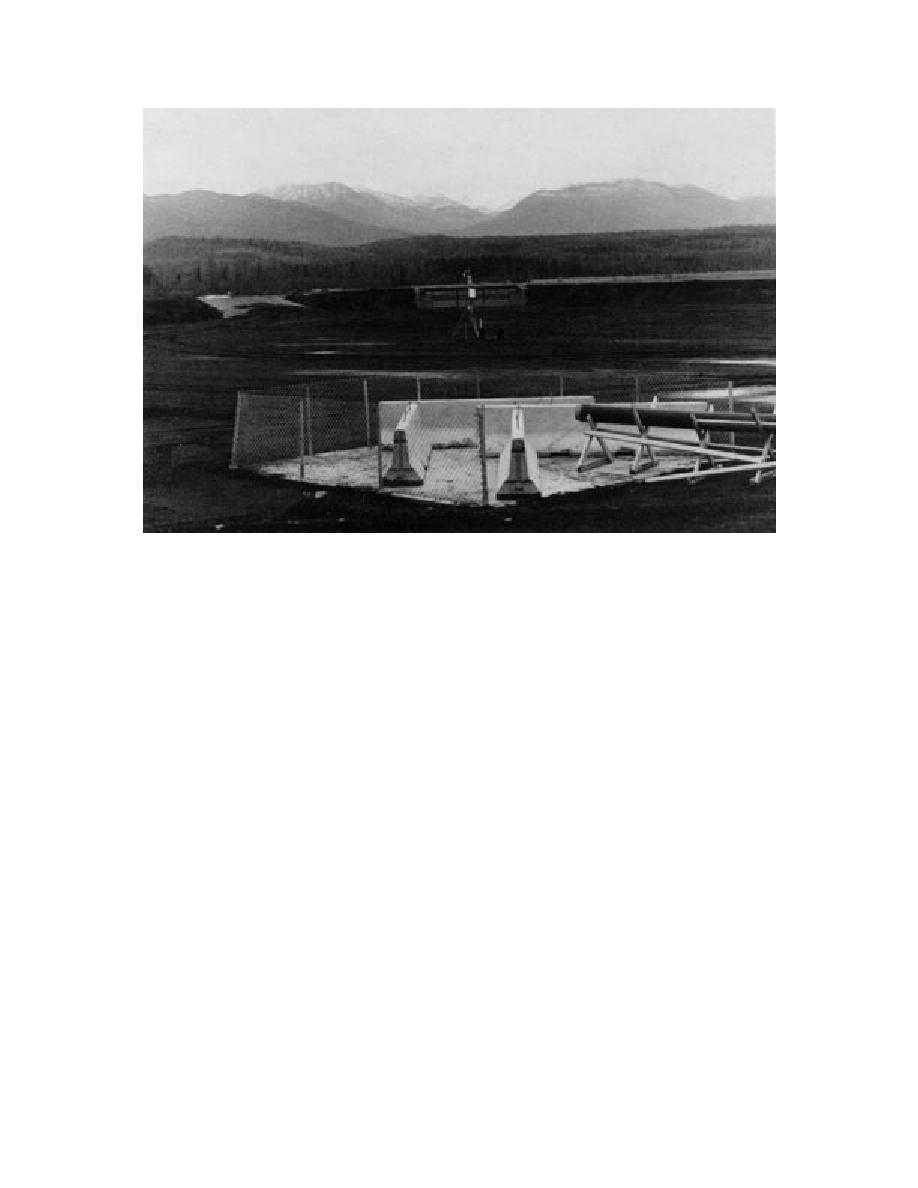
Figure 22. Spoils line outlet pads.
to contain any passed-through ordnance and to
Flats; a pad at Clunie Creek where deployment
restrict access to the pads (Fig. 22).
would be based; and setting up the cable traverse
A drop inlet structure located at the south cor-
system for guiding the dredge during dredging
ner of the basin is used for decanting the superna-
operations. Assistance from several entities, in-
tant back to the Flats after settling (Fig. 4). The
cluding the DPW, Roads and Grounds at Fort
structure consists of an adjustable weir, a filtering
Richardson, and several military functions, was
fence 2 m behind the weir, and a 1.2-m drop in-
critical in the completion of these tasks.
let 1.4 m behind the fence. The drop inlet connects
The largest project was the construction of the
to a 0.6-m corrugated culvert that empties out in
retention basin, where spoils from the dredging
a highly vegetated section of Area C in the Flats.
operation are pumped for decantation and treat-
Construction of the basin was initiated in July
ment. The retention basin is a 0.78-ha earthen struc-
of 1994. Due to the hazardous conditions, the work
ture constructed of compacted gravel and lined
was performed by the Roads and Grounds sec-
on the bottom and inner sides with a 15- to 20-cm-
tion of the DPW with help from other support
thick compacted layer of peaty silt. The berms en-
functions at Fort Richardson. Originally, the ex-
circling the basin are 2 m high with 2:1 interior
isting berms on the EOD pad were to be utilized
and 3:1 exterior slopes. The tops of the berms are
as part of the retention basin, but these were found
approximately 2.5 m wide (Fig. 21). The interior
to be unsatisfactory by the site engineer. As work
face of the berms are lined with two layers of peaty
progressed and equipment operators became more
silt sandwiching an erosion control geotextile fab-
familiar with the site and its associated hazards,
ric. Two 8-m-square concrete pads for spoils out-
additional changes were made in the basin design
flow are located 3 m off the northwest berm near
and construction. The northeastern section of the
the north and west corners of the basin. Jersey bar-
riers are placed in a staggered chevron pattern to
basin area was heavily used for ordnance disposal
and detonation in the 1950s. When the operators
break the flow of the spoils into the basin. The pads
tried to level the area using cut and fill (the corner
are surrounded by chain-link fence on three sides
25



 Previous Page
Previous Page
